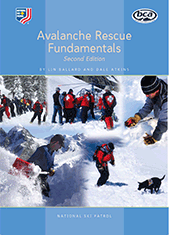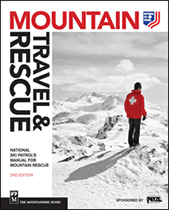

The National Ski Patrol has over 4,700 Alumni Members, including over 200 Alumni in the Southern Division. They represent a wealth of experience, talent, knowledge and dedication. While the Alumni Program is certainly an excellent way to "retire" from active patrolling, it also offers numerous opportunities to supplement the efforts of the "active" membership.
There are many reasons to become an Alumni Member other than retirement. Often "Life Issues" such as family responsibilities, health or medical concerns, a move to the South Seas, new additions to the family, job responsibilities, etc. prohibit continuing as an active Patroller. Therefore, many Patrollers choose to maintain their OEC certification and "temporarily" join the ranks of Alumni until they are able to resume active patrolling.
To become an Alumni Member, contact Cheri Overton NSP Alumni Manager (303-988-1111, Ext. 2646).
For annual dues of only $50, you will receive many benefits, which include:

If you are planning to visit an area where avalanche terrain regularly exists, you may want to enroll in the eight-hour Introduction to Avalanche Safety and Rescue course to learn the fundamental principles of avalanche hazards, safety, and rescue. This is particularly true if you are planning to ski/board outside of the controlled ski areas, where avalanches are more prevalent. This course also qualifies as an elective requirement for the NSP Senior Program.
The potential for avalanches exists wherever snow lies on steep slopes. It's not only an issue in "big mountain" areas. Avalanche problems are widespread in geography and degree of hazard. To meet the varying challenges represented by this avalanche danger, the NSP has established several avalanche training courses.
The NSP's avalanche courses fulfill all of the requirements of the Level I and Level II curricula adopted by the American Avalanche Association with one exception; the NSP courses include additional topics related to organized rescue. Please note that actual avalanche control work and rescue operations are under the direction and control of ski area management or other authorized agencies.
The NSP program includes the following courses:

Certified is a program that demands "...the highest level of proficiency from patrollers through
training and testing and would promote a level of patrolling in which there would be no compromise with excellence in
skiing, first aid, patrol management, administration and leadership."
- George Wesson [1921-2010], who developed the Certified Program for NSP and subsequently for Southern Division.
Visit the Southern Division Certified Program Page

Nothing is more important to the success of NSP's education programs than the cadre of hard-working instructors who deliver those programs. The NSP Instructor Develoment Programs consists of two components that provide training in course management as well as instruction, the Instructor Development course and a mentoring program.
This program includes the following courses:

Attendees taking Mountain Travel and Rescue (MTR) courses will learn a variety of skills, including nutrition and how the body performs in a wilderness environment, weather patterns, survival skills, working with group dynamics, an introduction to search and rescue, rope rescue skills, improvised toboggan construction, and land navigation with map, compass, and GPS. The MTR courses are taught in classroom and field sessions, including mock scenarios to ensure the attendees can apply what they have learned to real life situations.
Whether you are an outdoor enthusiast looking to expand your survival and travel skills in the backcountry environment or a ski patroller preparing for one of the worst possible scenarios a parent can face at a ski area (a lost child), the MTR courses can help you get prepared.
This program includes the following courses:
"The diverse nature of the Nordic classification lends itself to be a unique program
within the NSP. The variety of equipment types, the extended patient care knowledge required, the needed
backcountry survival skills, all contribute to defining what Nordic patrollers are."
- NSP Web Site
Visit the Southern Division OEC Program Page

"The Senior Program is designed for NSP members who aspire to the upper levels
of skiing/snowboarding and outdoor emergency care proficiency. It provides a forum in which patrollers
can enhance personal skiing/snowboarding and toboggan-handling proficiency, improve their ability to manage
OEC scenarios, and expand their patrolling knowledge and skills. The Senior Program is also excellent
preparation for patrollers looking to move into leadership roles in the NSP."
- NSP Web Site
Core modules differ by discipline, but may include:

This program encompases Introduction to Ski Patrolling, the Senior Program, and the Certified Program—those programs that affect the registration categories of NSP members. As well, you will find information on the Mountain and Avalanche Awareness course, a multi-discipline introduction to backcountry awareness.
This program includes the following courses:

Unique to the National Ski Patrol, the Transportation Program offers guidelines for area management to use to set the standard of training for its patrollers who operate toboggans. From training of basic candidates to honing the skills of Transportation instructors, this program ensures training opportunities for members of the NSP.
This program includes the following courses:

"The National Ski Patrol supports the establishment of a Young Adult Program
at every NSP registered Ski Patrol. You don't know what you missing until you have experienced the benefits
that a young adult program can provide. Click on the "establish a program" link to download the resources
that you need to establish a successful program."
- NSP Young Adult Program Site
NSP members and patrol candidates must be 15 years of age to qualify as Young Adult patrollers. Young Adult patrollers (age 15 through high school graduation) must meet the same requirements and fulfill the same patroller training and responsibilities as any other member of the patrol with the same skill set.